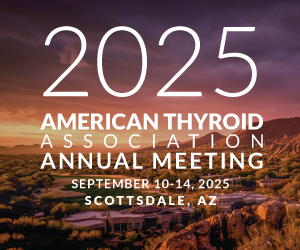February 11, 2002
On January 17, 2002, a presentation at the Society of Maternal-Fetal Medicine meeting in New Orleans created a wave of concern that women with thyroid disease were at higher than normal risk of having children with birth defects. “Thyroid disease during pregnancy and subsequent congenital anomalies,” by Drs. Adam Wolfberg and David Nagey, looked at 168 women with thyroid disease who gave birth at the Johns Hopkins Hospital between 1994 and 1999. The authors reported that 18% of the babies had serious birth defects, ranging from heart problems to cleft palate and extra fingers. The rate of birth defects was high whether a women had hypothyroidism or hyperthyroidism, and whether or not her thyroid disease was being treated.
Two American Thyroid Association member physicians commented on the study for a United Press International story. Both said that the study had structural problems and the results were preliminary. In spite of these criticisms, the study has been publicized and caused needless worry.
The American Thyroid Association wants to reassure the public that this a preliminary study and that our experts have serious questions about its conclusions. No other studies have shown results like it. Many researchers have looked at the children born to mothers with well-controlled thyroid disease, and no other study has shown unusually high rates of birth defects. Further, no thyroid specialists have seen extra birth defects in their patients’ children. Therefore, the American Thyroid Association does not believe that women with well-controlled thyroid disease run a significantly higher than normal risk of having a child with a birth defect. The Association always recommends that women with thyroid disease work closely with their doctor before and during their pregnancy, to ensure the best possible health for themselves and their baby.



